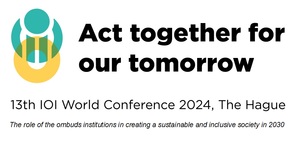New Zealand Chief Ombudsman Peter Boshier says Auckland Prison’s culture remains one of containment rather than rehabilitation despite promised changes. Ombudsman Boshier today released the report of his first unannounced inspection of New Zealand’s only maximum security prison.
Mr Boshier says the new maximum security units on the Paremoremo site, opened in July 2018, were designed to aid the Prison rehabilitate prisoners and ready them for reintegrating into the community. Instead prisoners in the new units were locked in their cells most of the time and not able to participate in rehabilitation or education programmes. “Maximum security prisoners spent between 22-23 hours in their cells,” he says.
Mr Boshier said there were some good practices at the Prison – for instance, there was no double-bunking – and there were also some that required improvement. “There appears to be a serious and unacceptable lack of ventilation, compounded by impending summer heat, in the low and high security units.”
The Chief Ombudsman identified a number of other issues he was significantly concerned about, including two breaches of the United Nations Convention against Torture and Other Cruel, Inhuman or Degrading Treatment or Punishment. “Pepper spraying a prisoner, after he followed officers’ orders, was unwarranted and amounted to cruel treatment,” he says. “Furthermore, staff had failed to accurately report the incident which was captured on CCTV. This is concerning as staff receive Control and Restraint training.”
He also says that CCTV monitoring of all areas of the Intervention Support Unit (ISU), including the toilets, present a significant privacy issue.
At the time of the inspection, staff shortages were having a significant impact on the day-to-day lives of prisoners. Prisoners were missing out on medical appointments and other reintegration opportunities, including appointments with the Parole Board, WINZ and their case managers, as there were not enough custodial staff to escort them. “Staff vacancies and unplanned leave, particularly in the high and maximum security units, also meant that both prisoner and staff safety could be compromised,” he says.
He also noted that over a third of staff had less than two years’ experience. “Relationships in maximum security units were largely transactional, leading to an over-reliance on the physical security arrangements.”
A survey of prisoners revealed that 35 percent of those surveyed said they had been assaulted, and 13 percent sexually assaulted, in the Prison. Gangs had a strong presence in the Prison. “A high number of prisoners sought voluntary segregation mostly because of gang issues, bullying, stand-overs, and a fear for personal safety,” the Chief Ombudsman says.
Also concerning was the long periods of time prisoners were in the Assessment Unit, some for over a year. They had nothing to do and limited interaction with others. “The security arrangements and impoverished regime meant prisoners had few chances to demonstrate good behaviour. I consider such long stays in directed segregation inappropriate and well in excess of the 15 days set out in the Nelson Mandela Rules,” says Mr Boshier.
The New Zealand Chief Ombudsman made 37 recommendations and the Department accepted 33 and partially accepted four. The Department told Mr Boshier that it has been implementing his recommendations since the inspection earlier this year, including appointing more staff.
He visited the prison on 1 December to check on progress. “In my view, the Department of Corrections’ intention to shift its operating model away from containing difficult prisoners has yet to be realised. I expect to see significant improvements in the conditions of maximum security prisoners.”
Final report on an unannounced inspection of Auckland Prison under the Crimes of Torture Act 1989
Source: Office of the Ombudsman, New Zealand

